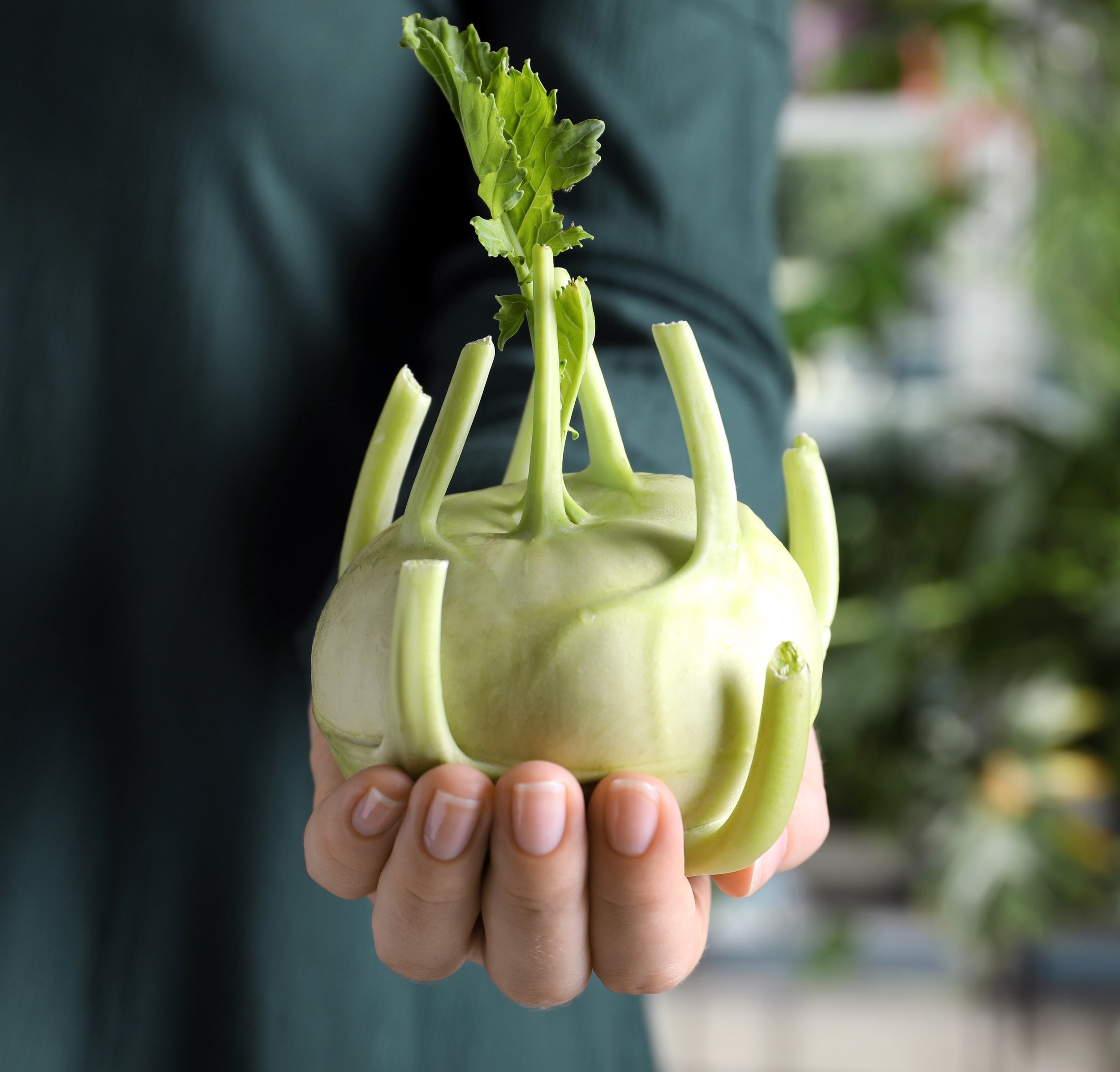Please Don't Overlook the Kohlrabi
/All the reasons (and recipes) to give some love for this vegetable
By Susan Able
I can’t count the number of times farm market shoppers have held up a kohlrabi, and said to anyone listening, “What is this thing?”
Let me tell you what it is—a kohlrabi.
It’s name, if you translate it from German perfectly describes it. Kohl in German means "cabbage." Rübe means “turnip.” This stout little vegetable is related to the other members of the Brassicas family, cabbages, broccoli, cauliflower, kale, Brussels sprouts and collard greens to mention a few. (And a side note as a write this, obvi that is why coleslaw is called coleslaw because of kohl or cabbage. You truly do learn something everyday.)
My father who grew up on a farm had an incredibly serious vegetable garden at our house and we raised kohlrabi in their own row. We old-school, farm-ish Hoosiers ate a lot of vegetables in the summer, and kohlrabi had a constant place on our summer table. Our kohrabi were trimmed of long leaves and just washed, not peeled. Then it would get the radish treatment: sliced thin with a light dusting of salt. It was crispy, fun to eat and tasted of something like a broccoli stem that had married a cabbage and then had a round, weird baby.
You most often see pale green kolhrabi at the farm markets, probably the Early White Vienna variety. But don’t sleep on the purple ones. They all taste more or less the same, but the purple are pretty and will give you that much loved “pop of color” on the table or crudités platter. A perusal of kohlrabi seed sources show there is also a sexy pure white one out there, the Beas variety, but I haven’t been able to get my hands on one yet.
And so what else to do with it? Let me count the ways. You can do our family’s thing and just slice it up and serve it salted. (And now I’m wondering if thin kohlrabi slices with great butter on a slice of a baguette might be as satisfying as a radish? New goal.)
Since it’s a kohlrabi’s texture is so firm, it lends itself to the matchstick format to be used in cold salads of all sorts. And since it is dense, roasting it also works well.
Here are a couple of my favorites, and both are super easy.
Kohlrabi and lime salad
This comes from my Yotam Ottolenghi recipe file. I love that Chef Yotam loves kohlrabi so much that he has written several recipes using them. This has some slight adaptations, but it serves 4 people generously. I made this last week as a side for a roast pork shoulder. Perfect.
3 kohlrabi (about a pound), peeled and cut into slender sticks about two inches long and only 1/4 wide
2 granny smith apples, peeled and cut the same size as the kohlrabi
2 mild green chilies (Anaheim or Poblano), de-seeded and julienned
1/8 cup of fresh mint leaves, roughly chopped
1/8 cup of fresh tarragon leaves, roughly chopped
2 green onions, thinly sliced
1½ tablespoons black sesame seeds (or toasted whites ones as a substitute)
1 lime, finely zested plus 2½ tablespoons of its lime juice
1 tablespoon olive or peanut oil
1 garlic clove, peeled and crushed
1 cup whole milk (full fat) Greek yogurt or sour cream or mix the two (1/2 cup each)
1 teaspoon sesame oil
Salt
Set aside the yogurt (or sour cream, or even Mexican crema) in a small bowl.
Put all the ingredients except the sesame oil in a big bowl with three-quarters teaspoon of salt. Stir well, then divide between four plates. Spoon the yogurt on top, followed by a drizzle of sesame oil. Serve at once.
Roasted Kohlrabi
My husband has an affinity for roast turnips, and he says he likes roasted kohlrabi just as much. This is so easy, and is the perfect side dish for anything on the grill. We just ate our first ones of the season with sausages from our Elysium Farm’s Red Wattle pigs.
2 pounds kohlrabi, cut in 1” wedges
2 tablespoons olive oil
1 teaspoon sea salt
1 large pinch of cayenne pepper
3 tablespoons of freshly grated parmesan cheese
2 tablespoons of finely chopped parsley
Preheat the oven to 450˚. ]
On a sheet pan, toss the kohlrabi wedges with the olive oil, salt and cayenne pepper, making sure to coat all the wedges well. Roast, stirring a couple of time until the wedges become golden and tender. It should take between 25 and 30 minutes, but check them. Put the still hot wedges in a large serving bown and toss with cheese and parsley. Serve immediately.





